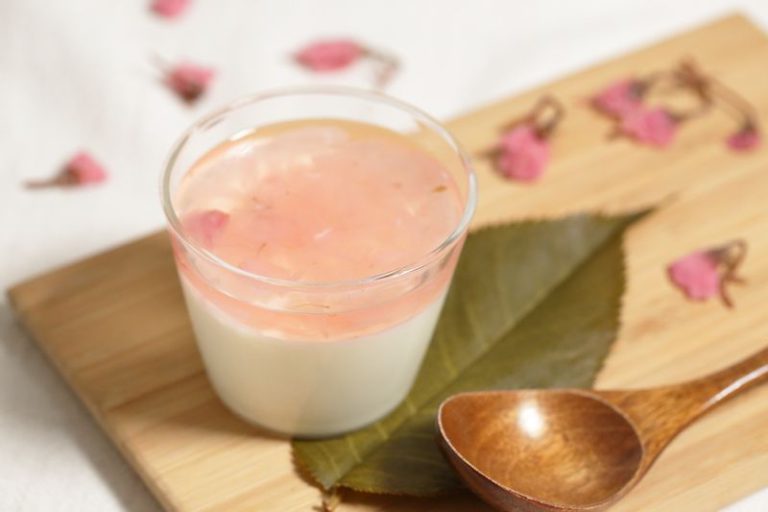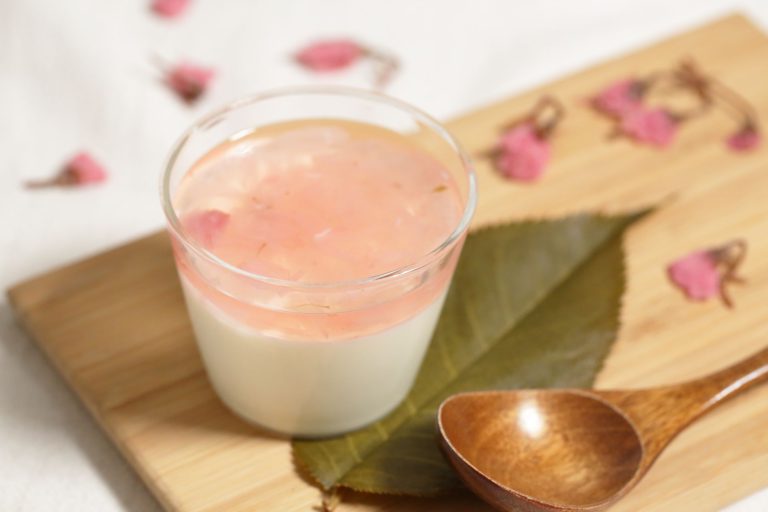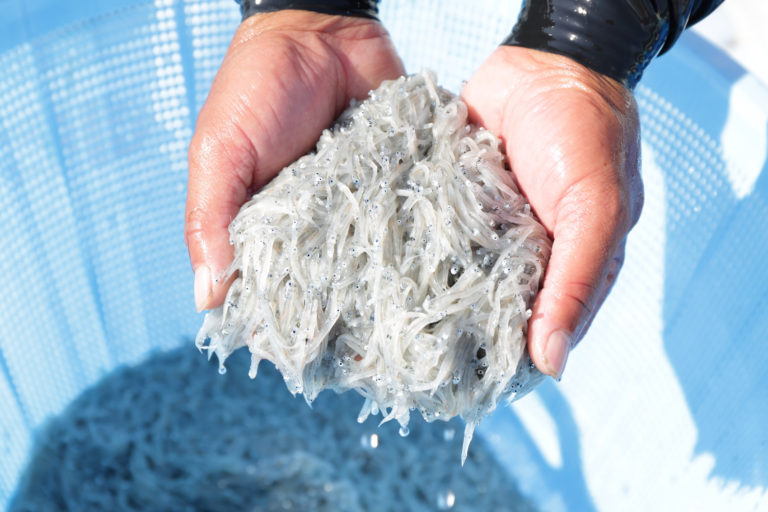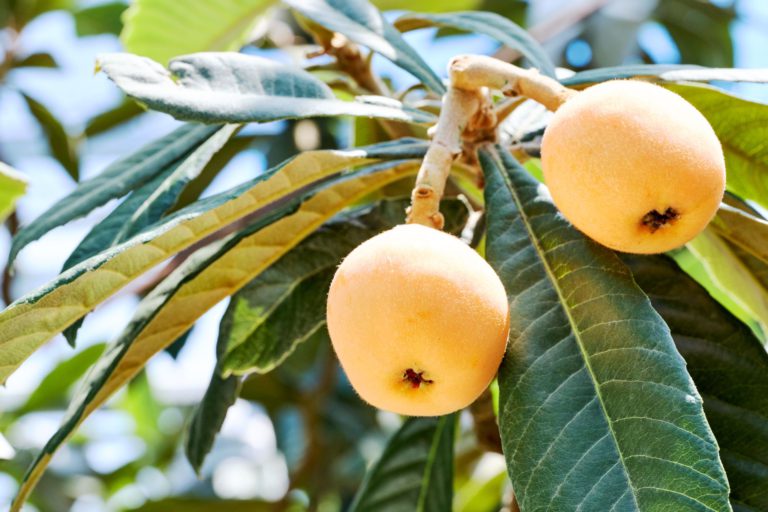Salt-Cured Cherry Blossoms Bring the Taste of Spring
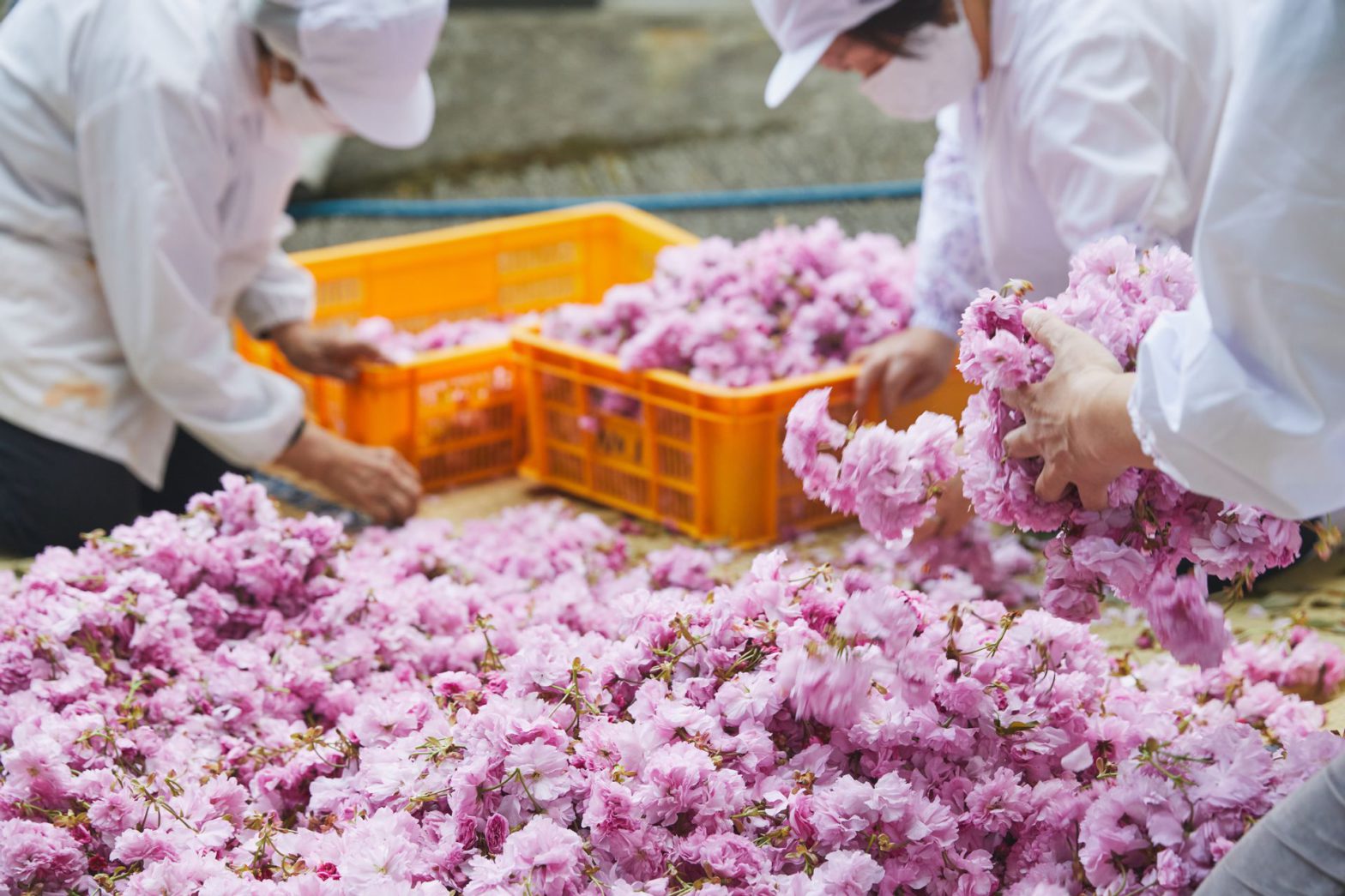
The only basin in Kanagawa Prefecture where Yaezakura trees are in full bloom
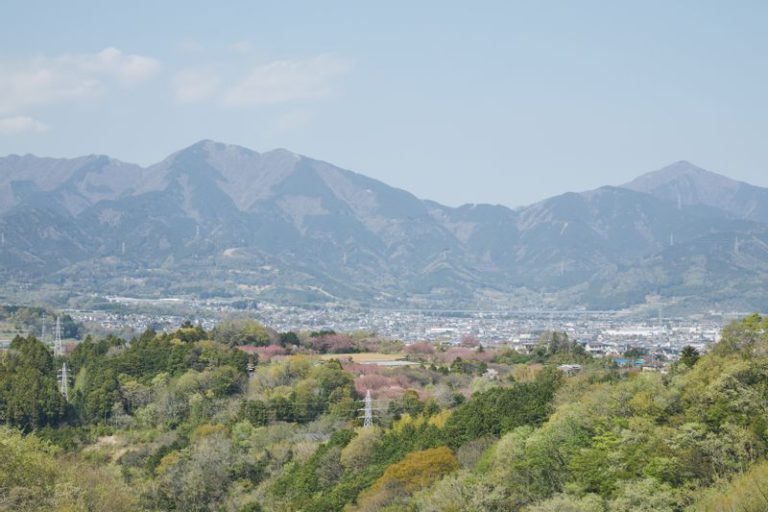
Hadano is in the western part of Kanagawa Prefecture, about 60 kilometers from central Tokyo. It is Kanagawa’s only basin, and the Tanzawa mountains, consisting of 1,000 to 1,600-meter high mountains, stretch tens of kilometers from east to west, north to south, in the northern region. The picturesque mountains stretching beyond the city are sometimes called the “roof of Kanagawa Prefecture.”
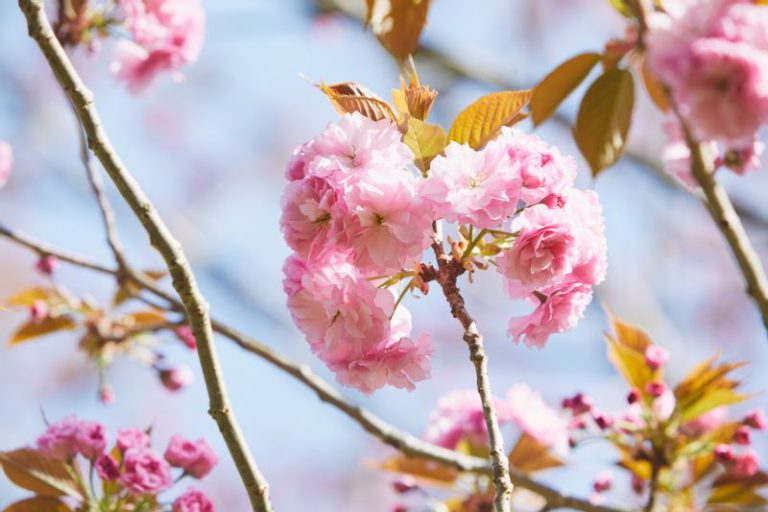
Chimura district, where cherry trees have grown wild since ancient times, is now known as the “home of Yaezakura.” Yaezakura, as its name suggests (yae meaning multilayer), are a cherry trees that bloom in multilayers. The petals that open in layers look like peonies. This allows you enjoy the fullness of the blossoms, not seen in the single-layered Someiyoshino blossoms. It is a late-blooming variety, and the best time to see it is from mid to late April. Yaezakura in the district bloom one to two weeks later than Someiyoshino.
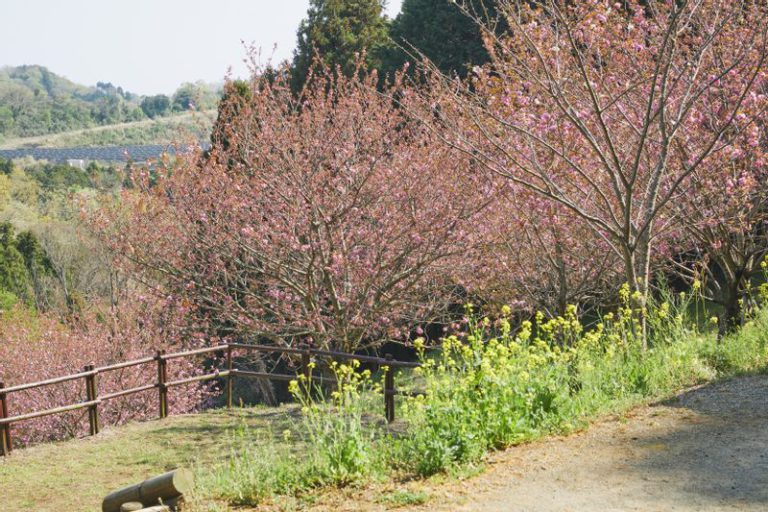
Mt. Zukko, a 10-minute drive from Shibusawa Station, is the district’s best spot to view cherry blossoms. It is a small mountain about 300 meters high, and the rest area near the summit is lined with Yaezakura trees covering the hillside. The contrast created with the canola blossoms blooming as if in competition is also quite a sight.
The area used to have sprawling terraced fields of leaf tobacco and canola seeds, but they fell into disrepair over time. However, the area was redeveloped by local volunteers in recent years, and Yaezakura trees were planted to give the area its present scenery.
Salt-cured cherry blossoms encapsulate spring
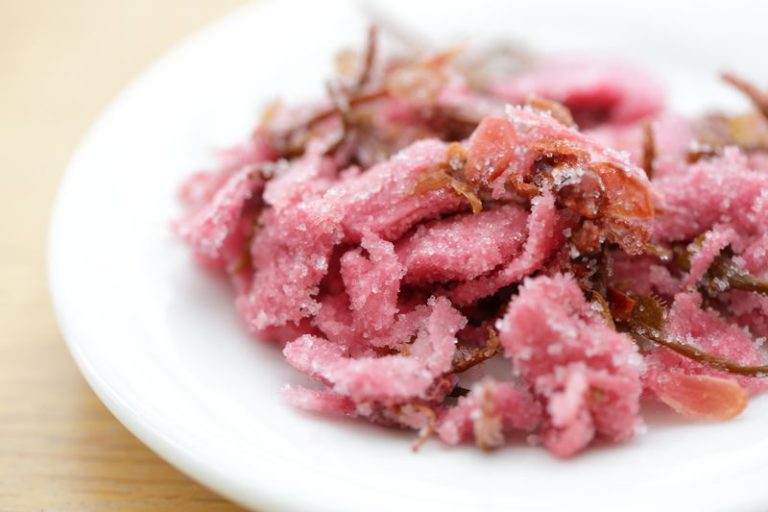
Cherry blossoms are not only pleasing to the eye but can also be enjoyed as food. A typical example is salt-cured cherry blossoms, in which the petals are marinated in salt and plum vinegar. The Chimura district is a major production area, shipping 15 to 20 tons annually, accounting for approximately 80% of the domestic market share. Cherry blossoms used for salt-curing are grown separately from those for viewing and are dotted around the district. Over 100 growers look after about 2,500 trees.
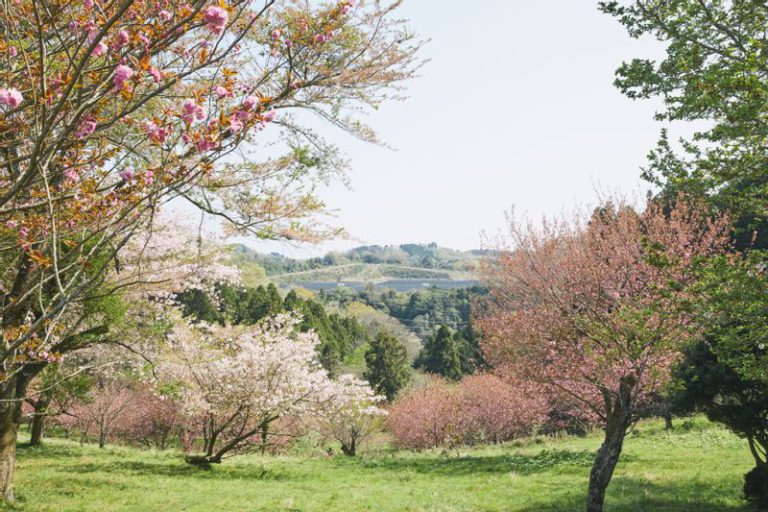
There are various theories on how salt-cured cherry blossoms became the Chimura district’s specialty. One theory is that it was a source of income for the commoners. In the late Edo period, people cured cherry blossoms to raise funds to hold local festivals, and the practice eventually took root in people’s lives.
Another theory is that it originates from Yagurazawa Okan. The Yagurazawa Okan was a highway developed in the Edo period, running from Edo Castle’s Akasaka Gate through Sangenjaya, Nagatsuta, Atsugi, and Gotenba, joining the Tokaido Highway at Numazu. It was customary to treat travelers with sakurayu (hot water infused with cherry blossoms) at teahouses along the highway in the Chimura district.
It is unclear whether either one of the anecdotes is true, but both indicate that cherry blossoms have been closely associated with Chimura district’s history.
Visiting the production area of salt-cured cherry blossoms where spring was in full swing, and the blossoms ready for harvest.
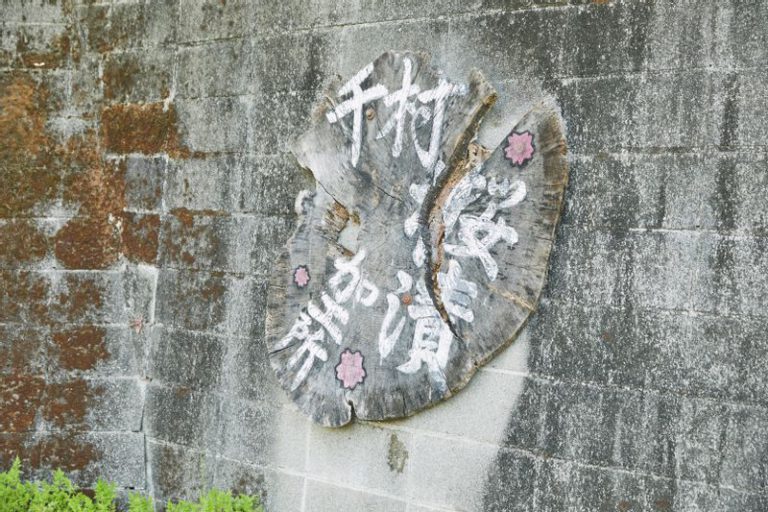
We visited the Chimura Sakurazuke processing plant in the Chimura district in mid-April, when temperatures in Tokyo exceeded 20 degrees Celsius. It is run by a group of producers’ Chimura Wakatakekai Processing Department.
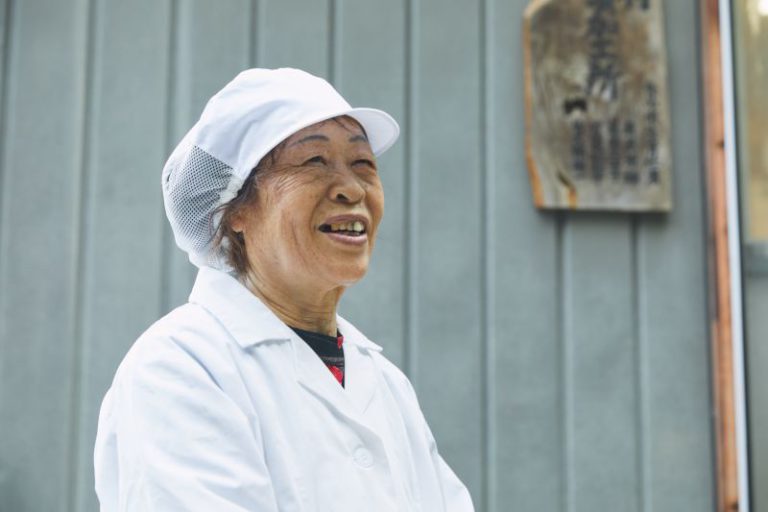
“We started production ahead of schedule this year. We must prepare a year’s worth of shipments in a week before the flowers are in full bloom,”
says Sueko Iwasa, the processing department’s representative.
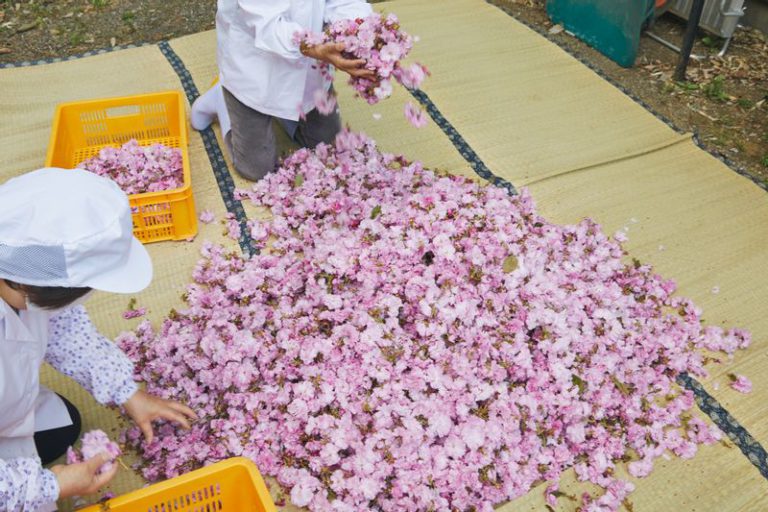
The flowers bloomed, as usual, this year, but they came all at once in greater numbers than expected, so the processing plant was busily churning out salt-cured cherry blossoms. Iwasa and the rest of the processing department staff sat down around a small mound, held the blossoms lightly with both hands, and began sifting them.
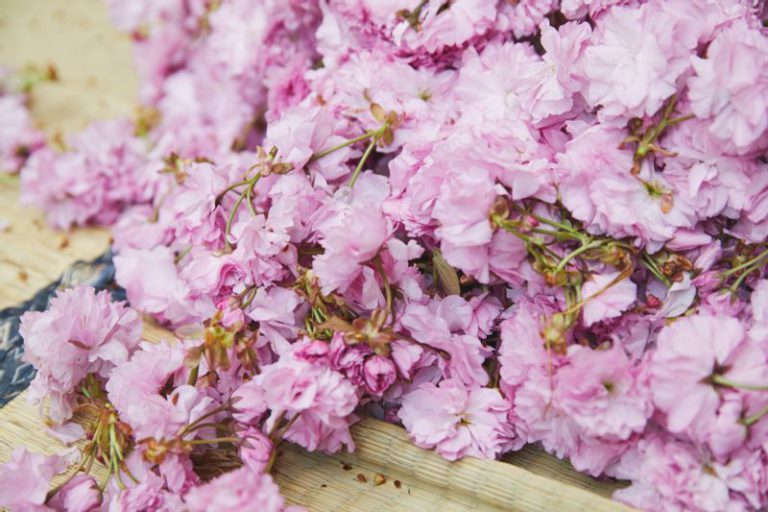
The Kanzan variety, with its striking dark pink petals, is used for salt curing. While it is more desirable in full bloom for blossom viewing, the best ones for salt curing are those that have just started to open up, about 70% to 80%. That is because when the petals are tightly overlapped, the coloring is better and looks more attractive.
About 15 kilograms of cherry blossoms were brought into the processing plant when we visited. The calyces and leaves are removed in advance at the time they are harvested. A small cherry-colored mound formed when everything was spread out on a rush mat. They are all salt-cured by hand.
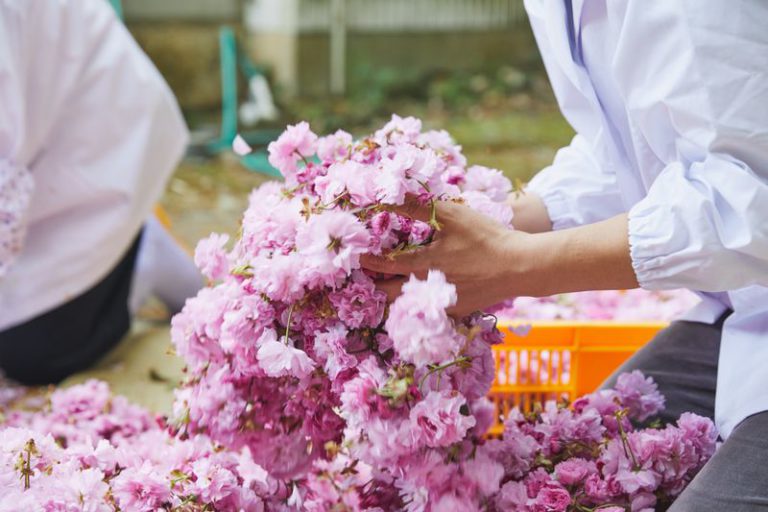
Occasionally, they would toss the flowers in the air and gather them again. Doing so allows the mixed-in dirt and dust to fall off. Then, they pick out any bruised or misshapen flowers. In the end, only winnowed twigs and leaves remained on the rush mat.
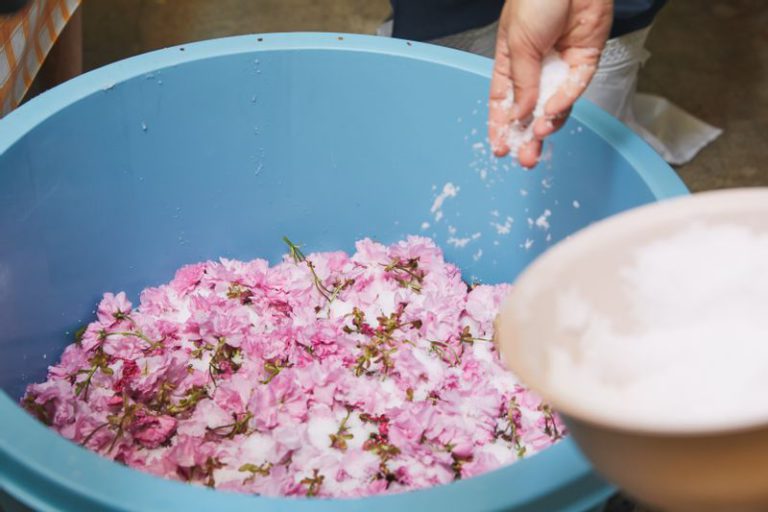
Once the blossoms are separated into small 5 kilogram portions, they proceed to the salt-curing process. Blossoms, salt, plum vinegar, and citric acid are thrown into the barrel and carefully stamped with the feet. When moisture rises to the surface, a weight is placed, and the barrels are put in storage. The product is ready about a month after curing.
The processing department has produced salt-cured blossoms for over 50 years, but the tradition nearly ceased once. The previous leader passed away suddenly in the mid-Heisei era (1989–2019). Iwasa ended up taking over unexpectedly.
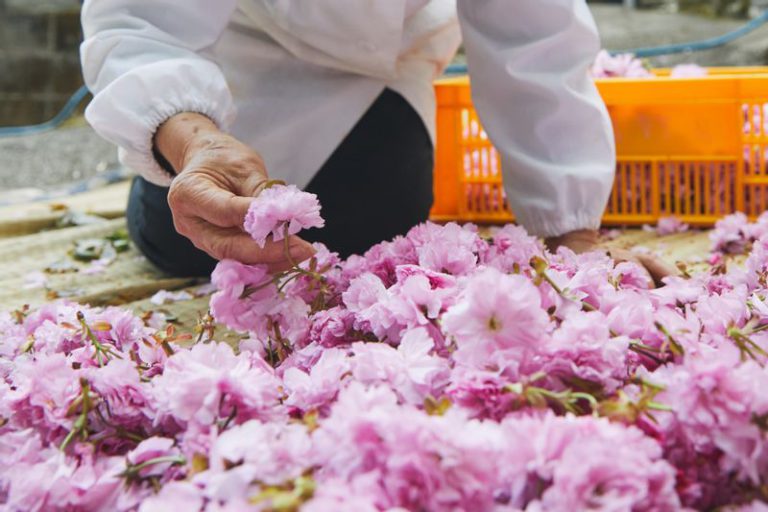
Iwasa says, “There was no recipe for the salt curing. So, we had to rely on the recollections of the processing plant staff. After I took over, we groped our way in reproducing the recipe for a while.”
When production stabilized, Iwasa and her team continued to refine the recipe through a series of improvements. Today, they can produce salt-cured blossoms with better coloring than the old recipe.
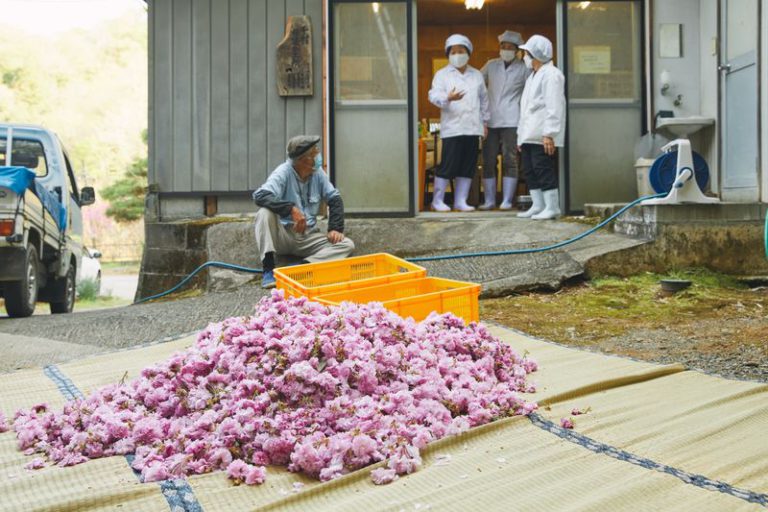
The processing department’s product is shipped around early June through the Japan Agricultural Co-operative (JA). Orders surged this year, and they plan to prepare about 250 kilograms of salt-cured blossoms. That is nearly double the previous year’s volume, but Iwasa says, “We used to ship almost 800 kilograms at our peak.”
“We have continued to this day, but we also have our share of challenges. Picking flowers from tall trees is dangerous, compounded by a shortage of manpower. If we can create a profitable system by increasing the number of processed merchandise, we might have more successors,” says Iwasa.
Savor the season's salt-cured cherry blossoms
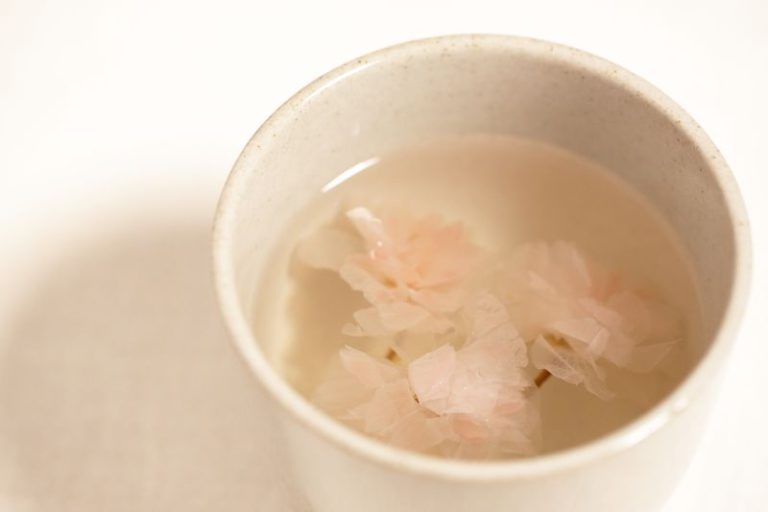
Salt-cured cherry blossoms are sold in bags throughout the year at the city’s farmers market, adding color to the corner of the sales floor. A rose-like scent wafts up when they are rehydrated in water. The distinctive aroma, not present in the freshly picked condition, is due to the formation of a compound called coumarin produced by salt curing.
It is a versatile ingredient that can be used in food or as a garnish. It adds a nice touch to bean-jam buns when pressed into their “navel” or added to rice balls. Sakurayu is served at festive occasions to bring good luck.
The editorial department has created a recipe using the salt-cured cherry blossoms featured in this article. It is for a blancmange, a dessert originating in France. We added the aroma and flavor of cherry blossoms to create a treat that allows you to feel the senses unique to spring.
Salt-cured cherry blossoms have been kept alive continuously from generation to generation by volunteers. If you want to enjoy the feeling of spring in all its condensed glory, try a sakurayu. It is also worth using its aroma to enjoy it in various ways.
With its glorious aroma, it will gently revive memories of viewing cherry blossoms.

